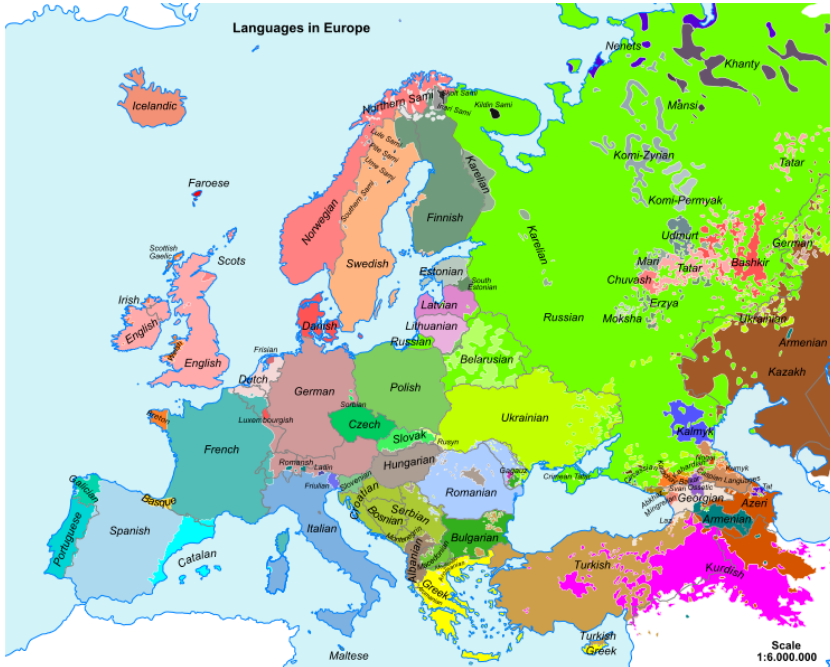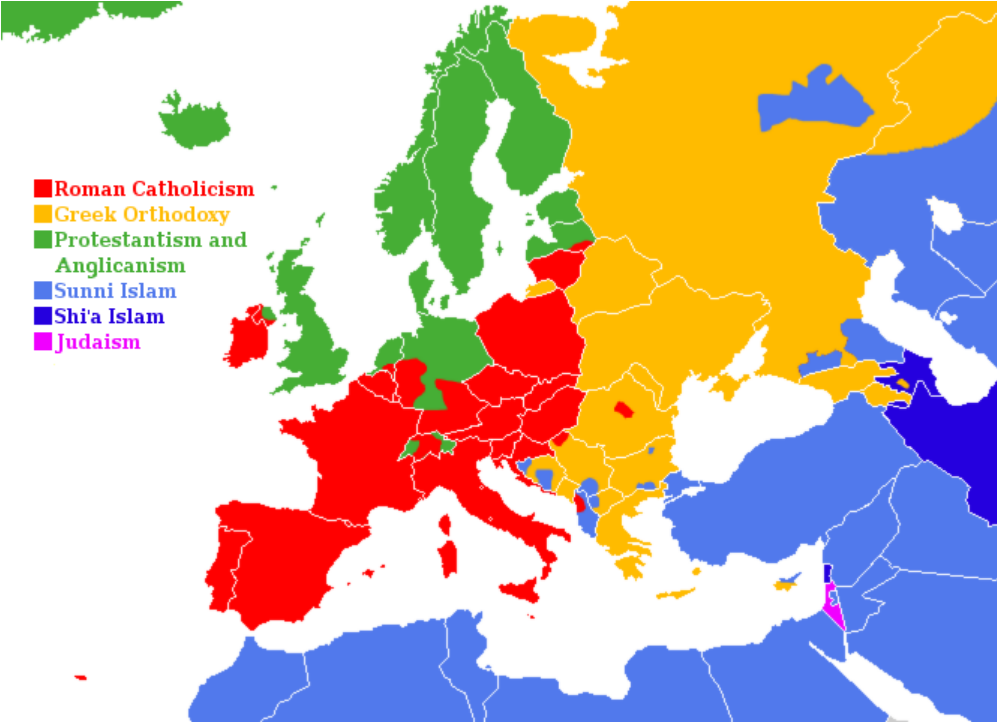2.5: Shifting National Identities
- Page ID
- 131874
\( \newcommand{\vecs}[1]{\overset { \scriptstyle \rightharpoonup} {\mathbf{#1}} } \)
\( \newcommand{\vecd}[1]{\overset{-\!-\!\rightharpoonup}{\vphantom{a}\smash {#1}}} \)
\( \newcommand{\dsum}{\displaystyle\sum\limits} \)
\( \newcommand{\dint}{\displaystyle\int\limits} \)
\( \newcommand{\dlim}{\displaystyle\lim\limits} \)
\( \newcommand{\id}{\mathrm{id}}\) \( \newcommand{\Span}{\mathrm{span}}\)
( \newcommand{\kernel}{\mathrm{null}\,}\) \( \newcommand{\range}{\mathrm{range}\,}\)
\( \newcommand{\RealPart}{\mathrm{Re}}\) \( \newcommand{\ImaginaryPart}{\mathrm{Im}}\)
\( \newcommand{\Argument}{\mathrm{Arg}}\) \( \newcommand{\norm}[1]{\| #1 \|}\)
\( \newcommand{\inner}[2]{\langle #1, #2 \rangle}\)
\( \newcommand{\Span}{\mathrm{span}}\)
\( \newcommand{\id}{\mathrm{id}}\)
\( \newcommand{\Span}{\mathrm{span}}\)
\( \newcommand{\kernel}{\mathrm{null}\,}\)
\( \newcommand{\range}{\mathrm{range}\,}\)
\( \newcommand{\RealPart}{\mathrm{Re}}\)
\( \newcommand{\ImaginaryPart}{\mathrm{Im}}\)
\( \newcommand{\Argument}{\mathrm{Arg}}\)
\( \newcommand{\norm}[1]{\| #1 \|}\)
\( \newcommand{\inner}[2]{\langle #1, #2 \rangle}\)
\( \newcommand{\Span}{\mathrm{span}}\) \( \newcommand{\AA}{\unicode[.8,0]{x212B}}\)
\( \newcommand{\vectorA}[1]{\vec{#1}} % arrow\)
\( \newcommand{\vectorAt}[1]{\vec{\text{#1}}} % arrow\)
\( \newcommand{\vectorB}[1]{\overset { \scriptstyle \rightharpoonup} {\mathbf{#1}} } \)
\( \newcommand{\vectorC}[1]{\textbf{#1}} \)
\( \newcommand{\vectorD}[1]{\overrightarrow{#1}} \)
\( \newcommand{\vectorDt}[1]{\overrightarrow{\text{#1}}} \)
\( \newcommand{\vectE}[1]{\overset{-\!-\!\rightharpoonup}{\vphantom{a}\smash{\mathbf {#1}}}} \)
\( \newcommand{\vecs}[1]{\overset { \scriptstyle \rightharpoonup} {\mathbf{#1}} } \)
\( \newcommand{\vecd}[1]{\overset{-\!-\!\rightharpoonup}{\vphantom{a}\smash {#1}}} \)
\(\newcommand{\avec}{\mathbf a}\) \(\newcommand{\bvec}{\mathbf b}\) \(\newcommand{\cvec}{\mathbf c}\) \(\newcommand{\dvec}{\mathbf d}\) \(\newcommand{\dtil}{\widetilde{\mathbf d}}\) \(\newcommand{\evec}{\mathbf e}\) \(\newcommand{\fvec}{\mathbf f}\) \(\newcommand{\nvec}{\mathbf n}\) \(\newcommand{\pvec}{\mathbf p}\) \(\newcommand{\qvec}{\mathbf q}\) \(\newcommand{\svec}{\mathbf s}\) \(\newcommand{\tvec}{\mathbf t}\) \(\newcommand{\uvec}{\mathbf u}\) \(\newcommand{\vvec}{\mathbf v}\) \(\newcommand{\wvec}{\mathbf w}\) \(\newcommand{\xvec}{\mathbf x}\) \(\newcommand{\yvec}{\mathbf y}\) \(\newcommand{\zvec}{\mathbf z}\) \(\newcommand{\rvec}{\mathbf r}\) \(\newcommand{\mvec}{\mathbf m}\) \(\newcommand{\zerovec}{\mathbf 0}\) \(\newcommand{\onevec}{\mathbf 1}\) \(\newcommand{\real}{\mathbb R}\) \(\newcommand{\twovec}[2]{\left[\begin{array}{r}#1 \\ #2 \end{array}\right]}\) \(\newcommand{\ctwovec}[2]{\left[\begin{array}{c}#1 \\ #2 \end{array}\right]}\) \(\newcommand{\threevec}[3]{\left[\begin{array}{r}#1 \\ #2 \\ #3 \end{array}\right]}\) \(\newcommand{\cthreevec}[3]{\left[\begin{array}{c}#1 \\ #2 \\ #3 \end{array}\right]}\) \(\newcommand{\fourvec}[4]{\left[\begin{array}{r}#1 \\ #2 \\ #3 \\ #4 \end{array}\right]}\) \(\newcommand{\cfourvec}[4]{\left[\begin{array}{c}#1 \\ #2 \\ #3 \\ #4 \end{array}\right]}\) \(\newcommand{\fivevec}[5]{\left[\begin{array}{r}#1 \\ #2 \\ #3 \\ #4 \\ #5 \\ \end{array}\right]}\) \(\newcommand{\cfivevec}[5]{\left[\begin{array}{c}#1 \\ #2 \\ #3 \\ #4 \\ #5 \\ \end{array}\right]}\) \(\newcommand{\mattwo}[4]{\left[\begin{array}{rr}#1 \amp #2 \\ #3 \amp #4 \\ \end{array}\right]}\) \(\newcommand{\laspan}[1]{\text{Span}\{#1\}}\) \(\newcommand{\bcal}{\cal B}\) \(\newcommand{\ccal}{\cal C}\) \(\newcommand{\scal}{\cal S}\) \(\newcommand{\wcal}{\cal W}\) \(\newcommand{\ecal}{\cal E}\) \(\newcommand{\coords}[2]{\left\{#1\right\}_{#2}}\) \(\newcommand{\gray}[1]{\color{gray}{#1}}\) \(\newcommand{\lgray}[1]{\color{lightgray}{#1}}\) \(\newcommand{\rank}{\operatorname{rank}}\) \(\newcommand{\row}{\text{Row}}\) \(\newcommand{\col}{\text{Col}}\) \(\renewcommand{\row}{\text{Row}}\) \(\newcommand{\nul}{\text{Nul}}\) \(\newcommand{\var}{\text{Var}}\) \(\newcommand{\corr}{\text{corr}}\) \(\newcommand{\len}[1]{\left|#1\right|}\) \(\newcommand{\bbar}{\overline{\bvec}}\) \(\newcommand{\bhat}{\widehat{\bvec}}\) \(\newcommand{\bperp}{\bvec^\perp}\) \(\newcommand{\xhat}{\widehat{\xvec}}\) \(\newcommand{\vhat}{\widehat{\vvec}}\) \(\newcommand{\uhat}{\widehat{\uvec}}\) \(\newcommand{\what}{\widehat{\wvec}}\) \(\newcommand{\Sighat}{\widehat{\Sigma}}\) \(\newcommand{\lt}{<}\) \(\newcommand{\gt}{>}\) \(\newcommand{\amp}{&}\) \(\definecolor{fillinmathshade}{gray}{0.9}\)What does it mean to be European? Perhaps simply it means someone who’s from Europe. But what does it mean to be French or German or Spanish or British? These countries have long been comprised of a number of different ethnic and linguistic groups (Figure \(\PageIndex{1}\)). For example, Spain contains groups speaking Spanish, the language of the historic Castilian people of the region, the Basque-speaking region in the north, the Catalan-speaking region centered around Barcelona, and numerous other distinct language groups. The United Kingdom, while comprised primarily of people who identify as “English,” also includes the areas of Wales, Scotland, and Northern Ireland, each with a distinct linguistic and cultural identity. The Welsh are actually believed to be the oldest ethnic group within the United Kingdom, so perhaps they could argue that they represent the original national identity.

Before the creation of states as we understand them today, Europe was divided largely by ethnicity or tribe. Empires often took control of multiple ethnic areas. Familial allegiances were of fundamental importance. That’s not to say that geography or territory didn’t matter, but simply that who you were mattered more than where you were.
The creation of sovereign political states changed this notion. Multiple ethnicities were often lumped together under single political entities, sometimes due to peaceful alliances and sometimes due to armed conquest. In cases where a state was dominated by a single, homogeneous ethnic and linguistic-cultural identity, we would refer to it as a nation state, (State meaning a sovereign political area. Nation meaning a group with a distinct ethnic and cultural identity.) Today, several European countries are considered nation-states, including Poland, where 93 percent of the population is ethnically Polish, and Iceland, which is 92 percent Icelandic. Historically, countries like France and Germany were also considered nation-states, though immigration has changed their cultural landscape.
The concept of nation-state is distinct from the idea of nationalism, which refers to the feeling of political unity within a territory. National flags, anthems, symbols, and pledges all inspire a sense of belonging amongst people within a geographic area that is distinct from their ethnic identity.
What happens when feelings of nationalism and national identity are linked with a particular ethnic group? In cases where a particular ethnic group represents the majority, nationalist ideals might be representative of that group’s language or religion. But what if there are other, minority ethnic groups that are excluded from what people think it means to be part of a particular state’s nationalist identity?
Migration has continually changed the cultural landscape of Europe and as immigrant groups have challenged or been challenged by ideas of nationalism. In 1290 CE, King Edward I expelled all Jews from England, essentially establishing Christianity as being at the core of English national identity. This expulsion lasted until 1657 CE. In France after the French Revolution, ideas of nationalism included “liberty, equality, and fraternity,” and extended into areas they conquered. In Germany, what it meant to be “German” under the Nazi Party excluded those who were considered to be “undesirable” and “enemies of the state,” such as Jews, Roma (sometimes referred to as Gypsies), persons labeled as “homosexuals,” communists, and others. Under Benito Mussolini, Italian nationalism excluded Slavs, Jews, and non-white groups.
Nationalism, taken to this extreme, is known as fascism. Fascists believe that national unity, to include a strong, authoritarian leader and a one-party state, provides a state with the most effective military and economy. Fascist governments might thus blame economic difficulty or military losses on groups that threaten national unity, even if those groups include their own citizens.
Within every country, ideas of nationalism grow, weaken, and change over time. Centrifugal forces are those that threaten national unity by dividing a state, and might include differing religious beliefs, linguistic differences, or even physical barriers within a state. Centripetal forces tend to unify people within a country. A charismatic leader, a common religion or language, and a strong national infrastructure can all work as centripetal forces. Governments could also promote centripetal forces by unifying citizens against a common enemy, such as during the Cold War.
Although the countries of Europe always had a significant amount of ethnic and linguistic variety, they typically maintained a strong sense of national identity. Religion in particular often worked as a centripetal force, uniting varying cultural groups under a common theological banner (Figure \(\PageIndex{2}\)).

Religious adherence in Europe is shifting. In Sweden, for example, over 80 percent of the population belonged to the Church of Sweden, a Lutheran denomination, in 2000. By 2014, only 64.6 percent claimed membership in the church and just 18 percent of the population stated that they believed in a personal God (Figure \(\PageIndex{3}\)). This statistic is indicative of a broad shift in Europe from traditional, organized religion toward humanism or secularism. Humanism is a philosophy emphasizing the value of human beings and the use of reason in solving problems. Modern humanism was founded during the French Revolution, though early forms of humanism were integrated with religious beliefs. Secular humanism, a form of humanism that rejects religious beliefs, developed later. Secularism refers broadly to the exclusion of religious ideologies from government or public activities.

Geographers can examine how secularization has occurred in Europe; that is, how Europe has been transformed from countries with strong religious values to a more nonreligious society. In general, areas within the core of Europe tend to be more secular and thus some researchers link secularization with rising economic prosperity. Most Western European countries have strong social welfare programs, where citizens pay a higher percentage of taxes to support universal healthcare, higher education, child care, and retirement programs. These social welfare programs often serve as centripetal forces, unifying a country by providing government support and preventing citizens from falling into extreme poverty.
- Nation-state:
-
a sovereign political area that has a homogenous ethnic and cultural identity
- Nationalism:
-
the feeling of political unity within a territory.
- Centrifugal forces:
-
forces that threaten national unity by dividing a state
- Centripetal forces:
-
forces that tend to unify people within a country
- Humanism:
-
a philosophy emphasizing the value of human beings and the use of reason in solving problems
- Secularism:
-
the exclusion of religious ideologies from government or public activities
- Social Welfare:
-
a government policy where citizens pay a higher percentage of taxes to support universal healthcare, higher education, child care, and retirement programs

